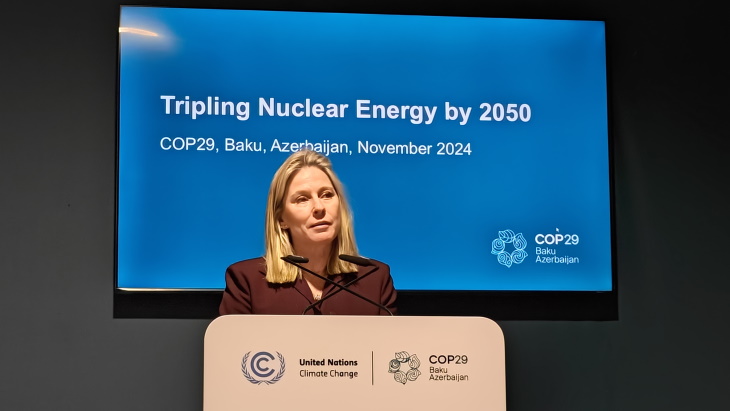WEC calls on leaders to face the music
 The World Energy Council (WEC) has called on policymakers and leaders to "get real" to ensure the world's energy future – and has released two future energy scenarios to illustrate how the world must strive to achieve harmony in the energy system.
The World Energy Council (WEC) has called on policymakers and leaders to "get real" to ensure the world's energy future – and has released two future energy scenarios to illustrate how the world must strive to achieve harmony in the energy system.The World Energy Council (WEC) has called on policymakers and leaders to "get real" to ensure the world's energy future - and has released two future energy scenarios drawing inspiration from the world of music to illustrate how the world must strive to achieve harmony in the energy system.
 |
| WEC's Pierre Gaddoneix opens proceedings at Daegu (Image: WEC) |
Launched at WEC's triennial World Energy Congress, currently being held at Daegu in South Korea, World Energy Scenarios: Composing Energy Futures to 2050 is the conclusion of a three-year study by an international panel of experts working in partnership with Switzerland's Paul Scherrer Institute (PSI). Its two contrasting policy scenarios are intended to provide a "neutral fact-based tool" for decision-makers attempting to satisfy the "energy trilemma" of environmental sustainability, energy security, and energy equity highlighted in a report released by the organisation in September.
The first scenario, which WEC says is more consumer-driven, is likened to jazz music: "In Jazz, musicians have freedom to take the lead and improvise; others in the band will often follow." The Symphony scenario focuses on achieving environmental sustainability through internationally coordinated policies and practices, and is likened to a piece of music played by a symphony orchestra where a large number of musicians each have a specific role to play and a musical score to follow.
Under both scenarios, primary energy supply which is itself set to increase by at least 27% (in the Symphony scenario) and up to 61% (Jazz) by 2050, while fossil fuels are expected to remain the dominant energy source supplying between 59% (Symphony) and 77% (Jazz) compared to 79% today.
WEC senior director for policies and scenarios Karl Rose said that while the future will present opportunities for technology solutions, the continued - and unsustainable - growth of demand remains the crucial issue. "Too often we look at the world as one entity and seek global solutions but the reality is very different and this needs to be recognised," he said, noting that by 2030 some 740-880 million people, predominantly in sub-Saharan Africa, will still not have access to electricity.
Nuclear energy's contribution to the 2050 energy mix is approximately 4% of total primary energy supply in Jazz and 11% in Symphony, compared to a 2010 contribution of 6%. However, low-carbon generation, combining nuclear generation and carbon capture, utilisation and storage for gas, coal and biomass, makes up over 80% of all 2050 electricity generation in the Symphony scenario and 40% in the Jazz scenario. While electricity generation from renewables, notably solar, is set to increase to at least double its current levels, both scenarios see emission levels leading to CO2 concentrations in excess of widely cited global targets of 450 ppm.
Getting real
The hope that growth in energy demand can fully be met by renewables is one of seven "energy myths" challenged by WEC in a statement released on the eve of the Daegu conference. According to the organisation, prevailing myths ranging from the notion of "peak oil" to misconceptions about the availability of capital are hampering efforts to create a sustainable energy future. The organisation used its pre-conference statement to urge decision makers to "get real" in defining pathways to deliver on global energy aspirations of energy access, security and environmental sustainability.
WEC chairman Pierre Gadonneix pointed to incidents including the global financial crisis and the Fukushima accident that have prompted many countries to re-evaluate their energy strategies over recent years, with the consequence that CO2 targets for 2050 will be missed "unless significant changes and policy frameworks are adopted." WEC secretary general Christoph Frei described the world as "at a tipping point."
Researched and written
by World Nuclear News

_99697.jpg)

_53540.jpg)





_66488.jpg)


